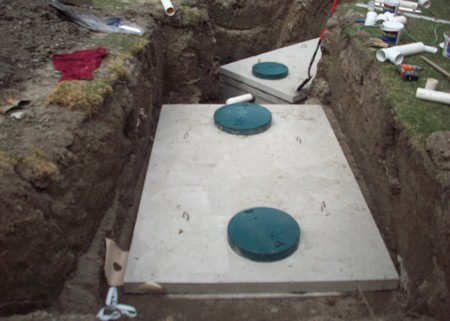Basically, septic system is a system designed for wastewater treatment with a view to avoid organic and nutrient pollutants. According to septic services, the purpose of septic systems is to guide the liquid waste from our homes to the place where wastewater treatment takes place. This system helps preventing soil and water pollution. Additionally, installing a sump pump can help manage excess water and prevent flooding or water damage in conjunction with a septic system.
We are not here to discuss what exactly septic system is rather our focus will remain on the different types of septic system. Septic systems are classified into two broad types, i.e. conventional system and alternative system. The former is based on gravity and pressure distribution systems and the latter is based on mound system, sand filter system and aerobic treatment unit (ATU).
Following is given a brief account for all the different types of septic systems:
Conventional Systems Category
Gravity Septic System
This gravity system falls under the category of conventional system wherein the gravity plays an important role in drainage of the liquid waste. In gravity septic system, the liquid waste or sewage flows by the way of septic tank into the drainage field. A series of trenches are there in the drainage field. The position of the drainage is really important. It must be below the outlet level of the septic tank. In cases of clogged drains, immediate drain cleaning is needed with the help of professionals from sites like https://superiorplumbing.net/drain-cleaning/.
Also, the trenches need to have their base lying on the natural soil. The water table or hard pan are often worked as a restrictive layer for the gravity system, so you have to make certain that the trenches are built three or four feet above the water table or hard pan. This soil between the base of the trenches and water table works as a filter and filter the waste water. This become possible because of natural chemical and biological process occurs in the soil along with the oxygen.
Pressure Distribution System
Pressure distribution system is another common septic system that is used to treat the waste water. A pump is used in this system to make sure that the waste water is distributed uniformly in the drainage field. Dosing and resting cycles are involved in this system which means that the waste liquid is dosed by the pump and is held inside till the next dose to the drainage field. This system is more common in the areas where there is impossible to construct drainage field lower than the outlet level of the septic tank. It’s important to deal with the problems with water softeners in such systems to maintain their efficiency and proper functioning.
Alternative Systems
Aerobic treatment unit (ATU)
This system falls under the category of alternative septic systems. In this system, oxygen has a vital role to play in the water treatment. In this particular system, oxygen is used to crush down the waste. As a result, the treated water is much cleaner than the one obtained in conventional systems. This system is highly recommendable for the areas which are extremely sensitive from an environmental standpoint. This system is often referred to as the lower-version of municipal wastewater treatment. The wastewater treatment system used in majority of the houses is an apt example of ATU system which relies on the suspended growth process. This process based on a water tight tank having aeration chamber. Air is pushed in the chamber and allows merging with the waste. This encourages the growth of the bacteria which crush down the waste and consume it up, hence remains the cleaner water. For expert assistance with wastewater treatment systems and other plumbing needs, consider reaching out to plumbers in maui.
Mound Septic System
The working of the mound septic system is almost similar to that of sand filter septic system. Unlike conventional system which requires deep soil for their setup, mound septic system can be installed at places where soil is not se deep. This system is installed just above the surface of the soil and the top of the soil is covered with particular sand fill material. This material is used to clean the wastewater. Sand fill material is composed of gravel bed including a network of pressurized pipes. The waste water is pumped into the mound from the septic tank and then distributed on the sand fill material uniformly as a result the water is filtered through the gravel bed and penetrate into the natural soil while wastes remain stuck in the gravel bed.
Sand Filter Septic System
The areas where soil is not in excess for water treatment, this method is used. Although, the operations of the sand filter septic system is based on the mound system, this system can either be installed above or below the ground. Sand is used in between the pump tank and drainage field. When the waste is pumped from the tank, it infiltrate through the sand and into the drainage field.
Above mentioned are some of the different types of the septic systems which are used to treat the wastewater in one way or another. Each of the system has its own pros and cons and is therefore distinctive form one another. Physical attributes have an important role to play in the installation and working of the septic systems. It is equally important to find reliable plumbing services in Southampton, PA before opting for any particular septic system.


